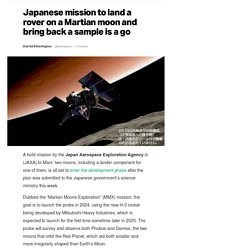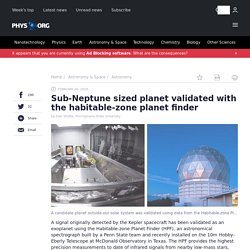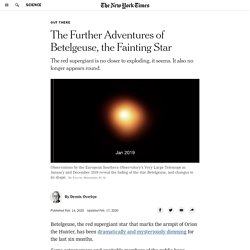

Astronomers Have Recorded the Biggest Explosion Ever Seen in the Universe. Hundreds of millions of light years away, a supermassive black hole sits in the center of a galaxy cluster named Ophiuchus.

Though black holes are renowned for sucking in surrounding material, they sometimes expel material in jets. This black hole is the site of an almost unimaginably powerful explosion, created when an enormous amount of material was expelled. “In some ways, this blast is similar to how the eruption of Mt. Astronomers Find The Biggest Explosion Ever Seen In The Entire Universe.
X-ray: Chandra: NASA/CXC/NRL/S.

Giacintucci, et al., XMM-Newton: ESA/XMM-Newton; Radio: NCRA/TIFR/GMRT; Infrared: 2MASS/UMass/IPAC-Caltech/NASA/NSF The Universe, everywhere we look, is full of cataclysmic events and transient outbursts. NASA, ESA, G. Dubner (IAFE, CONICET-University of Buenos Aires) et al.; A. Loll et al.; T. They come in all sorts of varieties, from supernovae to black holes to merger events and more. NASA, ESA, the Hubble Heritage Team (STScI/AURA)-ESA/Hubble Collaboration and A. Whether in light, particles, or gravitational waves, energy output is the great comparator. Oddball giant white dwarf may have formed in epic crash of smaller stars. A giant white dwarf star may be the offspring of a collision between two other white dwarfs, a new study finds.

The new finding suggests that other ultramassive white dwarfs with similar origins could exist; this may help shed light on how massive a white dwarf must be to explode in a supernova, the scientists behind the new research said. White dwarfs are the dim, fading, Earth-size cores of dead stars that are left behind after average-size stars have exhausted their fuel and shed their outer layers. Our sun will one day become a white dwarf, as will more than 90% of the stars in our galaxy.
Related: How to tell star types apart (infographic) Detectaron la mayor explosión en el Universo después del "Bing Bang" Lunes 2 marzo, 2020 Los astrónomos descubrieron la mayor explosión vista desde el comienzo del universo, originada en un agujero negro supermasivo.

La explosión, dijeron los investigadores, es la mayor vista desde el "Bing Bang”: el modelo cosmológico describe una rápida expansión de la materia y la energía que creó el universo observable. Alphabet’s Tidal moonshot tracks individual fish to help sustainably feed humanity. Today Alphabet is announcing Tidal, an X division moonshot project with the goal of preserving the ocean’s ability to support life and help feed humanity sustainably.

Tidal’s initial goal is to develop technologies that will give us a better understanding of what’s happening under water, with a focus on helping fish farmers to run and grow their operations in environmentally friendly ways. ”Humanity is pushing the ocean past its breaking point, but we can’t protect what we don’t understand,” writes Tidal General Manager Neil Davé in a blog post announcing the moonshot.
To achieve its early goal, Tidal has developed an underwater camera system coupled with computer vision and other AI techniques to track and monitor thousands of individual fish as they develop. Physicists Have Filmed The Moment an Atom Undergoes a Quantum Measurement. Before it's observed, an electron is a hot mess of possibility.

Just like the metaphorical Schrödinger's cat, it's only once we lift the lid from its metaphorical box and take a good, close look that an electron settles on a clear position around an atom. We've now had a closer look at exactly how this settling happens. TechCrunch fait désormais partie de Verizon Media. A bold mission by the Japan Aerospace Exploration Agency (JAXA) to Mars’ two moons, including a lander component for one of them, is all set to enter the development phase after the plan was submitted to the Japanese government’s science ministry this week.

Dubbed the “Martian Moons Exploration” (MMX) mission, the goal is to launch the probe in 2024, using the new H-3 rocket being developed by Mitsubishi Heavy Industries, which is expected to launch for the first time sometime later in 2020. The probe will survey and observe both Phobos and Deimos, the two moons that orbit the Red Planet, which are both smaller and more irregularly shaped than Earth’s Moon. The MMX lander will park on Phobos, while the probe studies the two space-based bodies from a distance. Quanta Magazine. Last summer, the gravitational wave observatory known as LIGO caught its second-ever glimpse of two neutron stars merging.

The collision of these incredibly dense objects — the hulking cores of long-ago supernova explosions — sent shudders through space-time powerful enough to be detected here on Earth. Sub-Neptune sized planet validated with the habitable-zone planet finder. A signal originally detected by the Kepler spacecraft has been validated as an exoplanet using the Habitable-zone Planet Finder (HPF), an astronomical spectrograph built by a Penn State team and recently installed on the 10m Hobby-Eberly Telescope at McDonald Observatory in Texas.

The HPF provides the highest precision measurements to date of infrared signals from nearby low-mass stars, and astronomers used it to validate the candidate planet by excluding all possibilities of contaminating signals to very high level of probability. The details of the findings appear in the Astronomical Journal. The planet, called G 9-40b, is about twice the size of the Earth, but likely closer in size to Neptune, and orbits its low mass host star, an M dwarf star, only 100 light years from Earth.
The Further Adventures of Betelgeuse, the Fainting Star. Betelgeuse, the red supergiant star that marks the armpit of Orion the Hunter, has been dramatically and mysteriously dimming for the last six months.

Some astronomers and excitable members of the public have wondered if the star is about to explode as a supernova. Others have suggested more prosaic explanations, involving long-term cycles of variability, sunspots or dust. Now new light, so to speak, has been shed on the mystery. Recent high-resolution photographs of the star suggest that it is changing shape, astronomers from the European Southern Observatory said in a news release on Valentine’s Day.
Instead of appearing round, the star now appears squashed into an oval. Watch: SpaceX Falcon 9 Rocket Launches 60 Satellites Into Orbit. -starlink-3-satellites-launch-rocket-landing-success. CAPE CANAVERAL, Fla. — SpaceX successfully launched its fourth batch of Starlink satellites into orbit and nailed a rocket landing today (Jan. 29) following days of weather delays for the mission. A sooty Falcon 9 rocket — which made its third flight with this launch — roared to life at 9:06 a.m. EST (1406 GMT), lifting off from Space Launch Complex 40 at Cape Canaveral Air Force Station here in Florida. The rocket carried 60 more Starlink satellites for SpaceX's growing constellation, the second such launch by the company this month. The Latest on Betelgeuse, Plus a Bright Supernova and New Comet Iwamoto.
Fresh, new sights animate the night as Betelgeuse continues to fade. Betelgeuse (lower left) has cornered our attention this winter season. Black holes caught in the act of swallowing stars. At the center of nearly every galaxy lies a monster, a giant black hole millions or even billions of times heavier than the Sun. Some, known as quasars or active galactic nuclei, shine brightly from across the universe as they continuously devour surrounding gas. But most are dormant, lurking invisibly for thousands of years—until a star passes too close and is ripped to shreds. That triggers a monthslong tidal disruption event (TDE), which can shine as brightly as a supernova. Until a few years ago, astronomers had spotted only a handful of TDEs. Farewell, Spitzer Space Telescope! NASA shuts down prolific observatory. One of NASA's great telescopes will go offline today (Jan. 30) after 16.5 years of observations that helped to paint a more complete picture of the universe.
The Spitzer Space Telescope launched in 2003 to look at the universe in the infrared part of the electromagnetic spectrum, allowing scientists to view objects that are cooler than the stars that emit visible light. Spitzer could view the structure of galaxies and also expanded on its original mission by watching a variety of cosmic objects, like the Earth-size TRAPPIST-1 rocky exoplanets, a nearly invisible ring around Saturn and a comet that was struck by a spacecraft. Human eyes can naturally sense starlight, but sometimes we need specialized tools that can view our world through other parts of the light spectrum, allowing us to learn more than what meets the eye. 2 old satellites will buzz each other over Pittsburgh tonight. Here's how to see the space junk. An intriguing — albeit brief — drama in the sky is anticipated to occur early this evening (Jan. 29), as two American satellites, having long been decommissioned but still in orbit, make a precariously close pass by each other.
Closest approach is expected to come at 6:39:35 p.m. EST (2339 GMT). At that moment, the two space vehicles will be soaring directly above the city of Pittsburgh, Pennsylvania. The two satellites in question are the Infrared Astronomical Satellite (IRAS), launched in 1983 and the Gravity Gradient Stabilization Experiment (GGSE-4), which was put into orbit back in 1967. Related: Potential collision of old US satellites would spawn new debris swarm Many are wondering if they will be able to actually see these two satellites pass very close to each other with their own eyes. Have We Solved the Black Hole Information Paradox? Black holes, some of the most peculiar objects in the universe, pose a paradox for physicists. Two of our best theories give us two different—and seemingly contradictory—pictures of how these objects work. Many scientists, including myself, have been trying to reconcile these visions, not just to understand black holes themselves, but also to answer deeper questions, such as “What is spacetime?”
While I and other researchers made some partial progress over the years, the problem persisted. In the past year or so, however, I have developed a framework that I believe elegantly addresses the problem and gives us a glimpse of the mystery of how spacetime emerges at the most fundamental level. NASA spacecraft breaks its own record with another swing by the sun. NASA's Parker Solar Probe took one step closer to the sun Wednesday (Jan. 29) when it executed its fourth flyby of our star.
This is the first such maneuver, called a perihelion, that the spacecraft has completed since swinging past Venus in December, a move that shrank the probe's orbit. NASA's Voyager 2 probe suffers glitch at the edge of the solar system. Mystery at Mars pole explained. In 1966, two Caltech scientists were ruminating on the implications of the thin carbon dioxide (CO2) Martian atmosphere first revealed by Mariner IV, a NASA fly-by spacecraft built and flown by JPL. Quantum calorimeter is as precise as nature allows.
Watch: SpaceX Falcon 9 Rocket Launches 60 Satellites Into Orbit. NASA spacecraft breaks its own record with another swing by the sun. Have We Solved the Black Hole Information Paradox? -crew-dragon-in-flight-abort-test-photos. Earth Climate Models Bring Exoplanet To Life. More Strange Objects Seen Near Black Hole at Center of Milky Way. G This is an Interesting Finding… The first G object was discovered in 2005, and was labeled G1. Seven years later, a second body was found, and given the moniker G2. The four newly-discovered objects are named G3 through G6. NASA's Kepler witnesses vampire star system undergoing super-outburst. Celebrating the legacy of the Spitzer Space Telescope. “You have to be proud when you look back,” said Joseph Hunt, the current Mission manager for the Spitzer mission.
During a press conference held by NASA on January 22, scientists reflected on the legacy Spitzer will leave behind. The panel of Spitzer team members looked back on the marvels it captured, as well as what it gave back to the crew. DARPA scraps XS-1 military space plane project after Boeing drops out. Phantom Express won't get off the ground after all. Why physicists are determined to prove Galileo and Einstein wrong. The Brightest Supernovae Of All Have A Suspiciously Common Explanation. Betelgeuse is Continuing to Dim! It's Down to 1.506 Magnitude. It's time to say goodbye to NASA's Spitzer Space Telescope. Here's why. The mystery behind a superbright supernova may just have been solved. Tethers Unlimited says early results of deorbit hardware test promising. 2020 January 23 - Globular Star Cluster NGC 6752. Betelgeuse continues to dim, diminishes to 1.506 magnitude.
Earth's oldest known meteor crash site found in Australian Outback. More Strange Objects Seen Near Black Hole at Center of Milky Way. A giant star ate its dead neighbor and caused one of the brightest supernovas ever, new study suggests. Computer model shows ancient Earth with an atmosphere 70 percent carbon dioxide. Mars Rover Is Frozen in Place Following Software Error. Geologists Confirm a Staggering 2.2 Billion-Year-Old Impact Crater in Australia. Earth's oldest known meteor crash site found in Australian Outback. Self-destructing dark matter may be flooding the sky with gamma rays, study suggests. NASA Wants to Grow a Moon Base Out of Mushrooms. An Earth-size planet in the habitable zone? New NASA discovery is one special world. Possible 'Super-Earth' planet discovered nearly 4 light years away from Earth. New Research Casts A Shadow On The Existence Of Dark Energy. -starlink-2-satellites-night-sky-visibility.
TechCrunch fait désormais partie dâVerizon Media. Astronomers Have Tracked a Repeating Radio Signal Across Space to an Unexpected Origin. Astronomers Have Tracked a Repeating Radio Signal Across Space to an Unexpected Origin. Full Wolf Moon Eclipse: First Full Moon of 2020 to Rise This Week. In a nearby galaxy, a fast radio burst unravels more questions than answers. The Hubble Space Telescope Turns 30 This Year. Here's How Astronomers Will Celebrate. Famous black hole has jet pushing cosmic speed limit. Planet Hunter Finds Earth-Size Habitable-Zone World. Gravitational-Wave Discovery Reveals Spectacular Crash of Neutron Stars, the 2nd Known.
Moon lost its magnetic field 1B years ago after its 'internal dynamo' ended, study finds. TechCrunch fait désormais partie dâVerizon Media. NASA captures imploding star in gorgeous 3D. Launches 60 Starlink Satellites, Nails Rocket Landing in Record-Breaking Flight. New evidence shows that the key assumption made in the discovery of dark energy is in error. NASA Planet Hunter Finds Its 1st Earth-Size World in the 'Habitable Zone'
Most Detailed Image of the Milky Way. -starlink-2-launch-success. Astronomers Just Detected a Second, Epic Neutron Star Collision. NASA loses contact with satellite searching for distant planets. Happy Perihelion Day! Earth Is Closest to the Sun Today. Astronomers Build Incredible 3D Visualization of Exploded Star Using NASA’s Great Observatories [Video] There's a Giant Mystery Hiding Inside Every Atom in the Universe. Gigantic 'Godzilla galaxy' spotted by NASA's Hubble telescope. Alien life is out there, but our theories are probably steering us away from it. Aliens exist but we may simply not see them, says first British astronaut into space SpaceX test-fires rocket ahead of record-setting Starlink launch. Clear, But Cool For Meteor Shower Tonight. Found: Crater From Asteroid Impact That Covered 10% of Earth's Surface in Debris.
Eyeball Planets Might Exist, And They're as Creepy as They Sound. Crater found from asteroid that covered 10% of Earth's surface in debris. Wow! More evidence for active volcanoes on Venus. This Robot’s Journey to an Icy Alien Moon Starts Beneath Antarctica. Happy Perihelion Day! Earth Is Closest to the Sun Today. The Space Missions to Watch in 2020. The 2020 Quadrantid Meteor Shower Peaks Soon. Here's What to Expect. Betelgeuse likely won't die as a supernova in your life. But astronomers are finding 'red nova' stars that may soon violently explode. Get Ready For A ‘Wolf Moon Eclipse’ To Kick-Off ‘Year of the Rat’ As Earth Gets Closest To The Sun.
Reporters from around the world get a look at Mars 2020 mission rover at Jet Propulsion Laboratory. There's Water on Alien Planets, Just Not As Much as Scientists Thought: Study. Asteroid that could cause ‘violent’ sky explosions approaching Earth. Crater found from asteroid that covered 10% of Earth's surface in debris. Meteor was likely cause for strange Saratoga area sighting. Scientists pin down timing of lunar dynamo's demise. GMRT discovers a gigantic ring of hydrogen gas around a distant galaxy. There May Be Active Volcanoes on Venus: New Evidence.
Found: Crater From Asteroid Impact That Covered 10% of Earth's Surface in Debris. Bus-size asteroid will buzz Earth at 18,400 mph on Thursday. Venus Could Be Volcanically Active. There's Water on Alien Planets, Just Not As Much as Scientists Thought: Study.